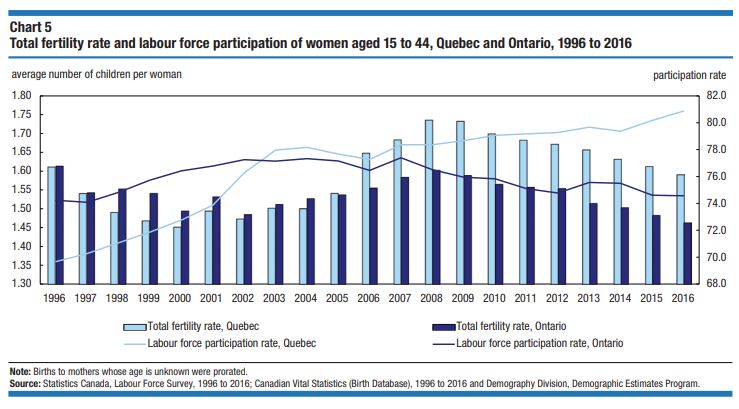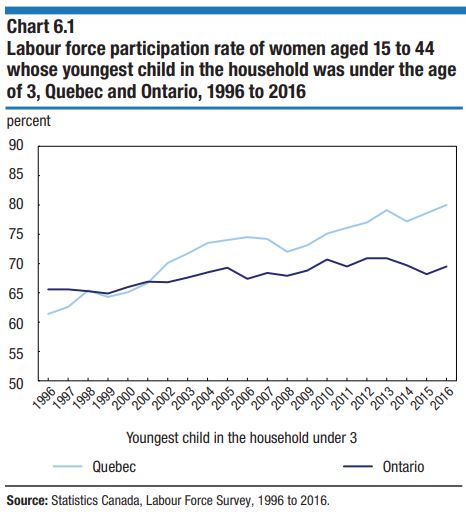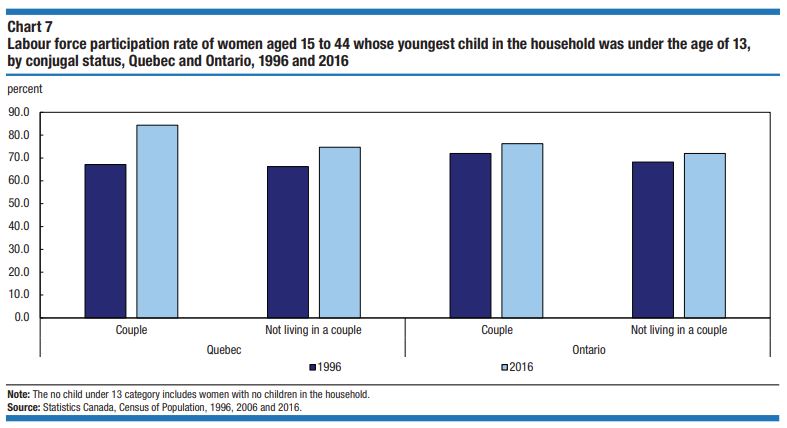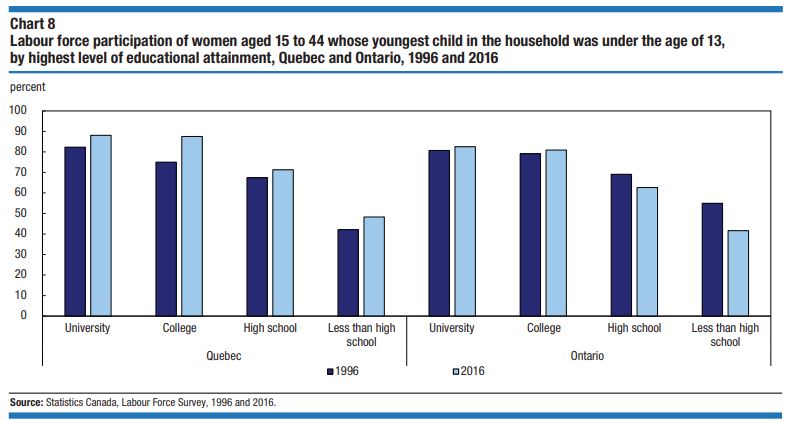The Economics and Statistics Division maintains archives of previous publications for accountability purposes, but makes no updates to keep these documents current with the latest data revisions from Statistics Canada. As a result, information in older documents may not be accurate. Please exercise caution when referring to older documents. For the latest information and historical data, please contact the individual listed to the right.
<--- Return to Archive
For additional information relating to this article, please contact:
August 20, 2018STUDY: FERTILITY RATES AND LABOUR FORCE PARTICIPATION AMONG WOMEN IN ONTARIO AND QUEBEC, 1996-2016 Earlier this summer, Statistics Canada released a study under their "Insights on Canadian Society" series, entitled "Fertility rates and labour force participation among women in Quebec and Ontario". Using data from the Canadian Vital Statistics Birth Database and from the Labour Force Survey (LFS), this study examines the relationship between fertility rates and labour force participation among women aged 15 to 44 in Ontario and in Quebec between 1996 and 2016, two provinces that followed different paths with respect to parental leave benefits and affordable child care over the past two decades.
(Note: All charts are taken from the publication)
The study chose Quebec due to its unique approach to low-fee child care, and Ontario because of its similarly-sized population and demographic breakdown, as well as similarities in representative groups in terms of fertility and labour force participation, such as Aboriginal people and immigrants.
FERTILITY AND DEMOGRAPHY
Fertility rates in Quebec have been, since 2005, higher than those in Ontario. In 2016, Quebec's total fertility rate was 1.59 children per woman, whereas Ontario's was 1.54 (compared to a national rate of 1.54 children per woman). Since collection of vital statistics began in the 1920s, fertility rates have been highest for women in their twenties, until in 2008, fertility of women in their thirties outpaced that of women in their twenties. Recent declining overall fertility patterns have, therefore, been reflective of a decline in the fertiilty rates of women under thirty. In the past three decades, Ontario saw a smaller increase in fertility among women in their thirties, and a larger decline in fertility among women in their twenties compared to women in Quebec. Vital statistics show that for two periods in the 1990s and in the mid-2000s, Quebec's fertility rate increased among women in their twenties.

Other demographic differences may also play a part in influencing fertility rates. Ontario has a higher proportion of coupled women in their twenties who are married (51%), whereas Quebec has a higher proportion of coupled women in common law relationships (79%). The social acceptance of common law unions in Quebec may positively impact the number of women in their twenties who are having children.

LABOUR MARKET OUTCOMES
It has been shown that labour force participation of women in Canada has been increasing since 1960, and much of the increase is represented by women in couples, owing to the fact that fewer women leave the workforce permanently after having children. Women with children still, however, have lower participation rates than women without children and also for fathers in general. In 2016, 71 per cent of women aged 15-44 with a child under the age of three in the household participated in the labour market, compared with 77 per cent of their counterparts with no children or older children.
From 1976 (the beginning of the modern labour force survey) until 2003, the labour force participation rate of women under the age of 44 in Ontario was higher than in Quebec. Labour force participation in Quebec increased between 1976 and 1996 in both jurisdictions, but after 1996, Quebec's rate continued to rise while Ontario's participation rate for that group stayed stable. These participation rate increases coincided with the divergence of fertility rates among the provinces beginning in the mid-2000s.
Studies have shown that Quebec's low-fee childcare policies have also had positive impacts on participation rates by females with young children, more so than in Ontario, in the absence of such childcare policies. Additionally, women with lower levels of education would have also benefitted from Quebec's policies (originally a refundable tax credit), lowering barriers to entering the workforce. These patterns held prior to, and after 1999, when the program was expanded to all children under the age of 5.

EDUCATIONAL ATTAINMENT AND IMMIGRATION TRENDS
Two factors which may show impacts on labour force participation do not seem to have such effects. The increasing prevalence of university degrees is expected to positively correlate to higher participation rates, but between 1996 and 2016, both Ontario and Quebec showed similar increases in the proportion of women with a university degree (a 16 percentage point increase for Quebec, and a 18 percentage point increase for Ontario). 
Foreign-born individuals have also been shown to have lower labour force participation than Canadian born counterparts. Though Quebec showed a larger increase in the proportion of immigrant women between 15 and 44 years old compared to Ontario, the Ontario proportions were at a higher level. Comparative analysis shows that if the two provinces had the same age structure, educational attainment, and foreign born composition, those factors would not likely account for the divergent trajectories in female labour force participation.
With similar wage growth in both Quebec and Ontario, and little evidence of differential impacts of immigrant female labour force participation, the study concludes that Quebec's family policies have most likely encouraged mothers of young children in Quebec to participate in the labour force.
-------------
The study, "Fertility rates and labour force participation among women in Quebec and Ontario", is available for free on the Statistics Canada website.
<--- Return to Archive